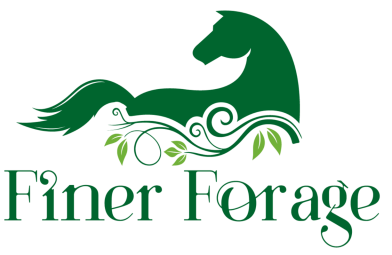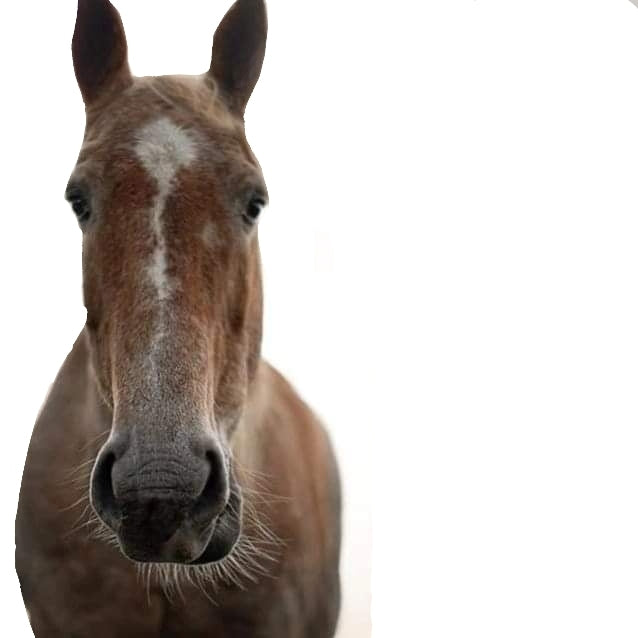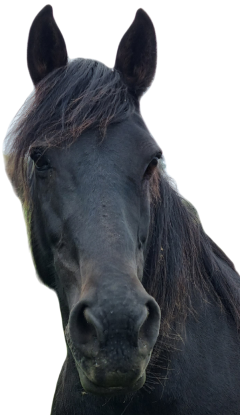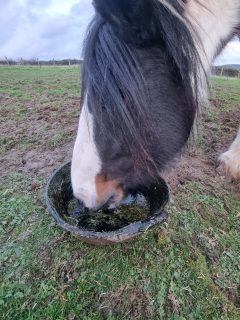
Carbohydrates - they are not all made equal
In terms of the equine diet, especially if you have a horse with laminitis history, the word ‘carbohydrate’ might make you panic slightly… but what exactly is a carbohydrate?
The ‘Carbo’ part of the word comes from Carbon, Hydrate from Hydrogen and Oxygen, usually H2O, as in, water…. So chemically C#H2O# e.g. glucose C6H12O6
BUT, and it’s a big but, not all carbohydrates are made equal. Fibre, the keystone of the equine diet, is actually a carbohydrate – a fermentable carbohydrate! So actually, carbohydrates are THE main foodgroup of the equine diet.
Fermentable carbohydrates, or fibre, consists of cellulose, hemicellulose, and lignin and are the components of the plant call walls. These fibres are resistant to the horse’s digestive enzymes and thus must be broken down in the equine hind gut by microbial fermentation. The vast array of bacteria, fungi and protozoa that live in your horses hindgut, ferment these fermentable carbohydrates to yield energy. Pectin is also a fermentable carbohydrate, but it is rapidly fermented by the microbial population and is easier for the hindgut microbes to break down and yield energy.
The products of all this hindgut fermentation which provide horses with energy, are Volatile Fatty Acids (VFAs). The three main VFA’s are Acetate, Butyrate and Propionate, which in turn yield energy as ATP. Acetate and Butyrate yield Acetyl CoA, which enters the Krebs cycle metabolic pathway and is converted to ATP – the energy molecule; Proprionate is converted to glucose, then to Acetyl CoA and also enters the Krebs cycle.
Hydrolysable Carbohydrates, or Non Structural Carbohydrates (NSC’s) are broken down into monosaccharides and they yield high levels of energy and do so more quickly. These are known as starches and sugars. Starch is contained within the plant cell cytoplasm in large granules. Hydrolysable carbohydrates are absorbed via the stomach and small intestines, after being broken down by digestive enzymes to glucose. The glucose enters the Krebs cycle to yield ATP.
Whether a fermentable carbohydrate or hydrolysable carbohydrate, the end product is the same - The key difference is in how much and how quickly the energy is yielded.
The horse should have a mainly fibre (fermentable CHO) diet. Studies have shown that horses that are prone to laminitis or metabolic disorder should have less than 10% of their diet as non-structural carbohydrates (soluble CHO, or sugar and starch). I tend to recommend to all of my client’s that all horses diets should not exceed 15%, or at least, not by much. Even those without any metabolic issues, as horse thrive on higher fibre, lower sugar diets. Occasionally, a horse in poor condition may need more, but I always prefer to add oil and protein as an energy source, in preference to starch and sugars.
The advantages of hydrolysable carbohydrates are that they are easily hydrolysed by the horse’s digestive enzymes in the stomach and small intestines, so they provide a good source of high energy. However, the disadvantages are that horses have a limited ability to digest starch and sugars in the small intestines, limited by their capacity to produce the amylase enzyme, and other factors. Undigested starch that arrives in the hindgut will lead to a change in the hindgut microbiome population, leading to an increase in starch-digesting bacteria, which further leads to production of proprionate, which can lead to acidosis in the hindgut and even to laminitis and/or colic. Furthermore, Glycaemic Index, or blood sugar levels, rise when starch is ingested, further leading to blood insulin levels elevating. In insulin resistant horses, sudden blood sugar rises can be a problem and can lead to laminitis.
High starch diets have also been shown to elevate the heart rate and increase excitability in horses, which is not desirable for disciplines such as dressage and eventing where horses need to concentrate. High starch diets have also been shown to increase reactivity to novelties, which would be problematic for horses encountering novel obstacles, such as showjumpers or eventers. It is thought that high starch diets alter the microbiota and elicit behavioural changes via the gut-brain axis.
The advantages of fermentable carbohydrates (fibre) are that it provides an important and safe source of energy to the horse, in addition to contributing to good gut health and healthy microbial populations. In wild horse populations, fibre provides the main source of their energy requirements, and can also be the main source for domestic horses. Fibre has a slow transit time and takes longer for the horse to chew and consume. Interestingly, pectin, can exhibit similar glycaemic rise as starch and cause similar issues, even though it is technically a fermentable carbohydrate.
Nia A Cooke MSc
February 2023



